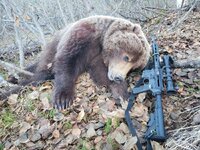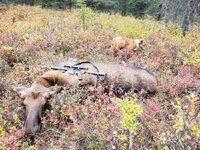If it’s unaware, I’m taking the bow and arrow all day long.
Your post demonstrates significant misunderstanding of how a broadhead kills. It is not designed to “damage” tissue and cause massive trauma. It’s simply designed to cut through vital tissue.
Sorry, by definition you are wrong. Trauma is by definition damaged tissue from energy transfer or failure of energy transfer (drowning). Broadheads are designed to maximize trauma for the given projectile.
Cutting is trauma. Crushing is trauma. Both cause death through shock, not all shock is hemorrhagic. But, medically speaking arrows and bullets both cause penetrating trauma and the expected pathologies are the same.
And a razor sharp broadhead behind a proper arrow does a better job of doing that after impacting heavy hide and muscle than any small caliber bullet. The cutting of vital tissue then causes rapid exsanguination and a resulting drop in blood pressure = dead animal in seconds. Often without the shock and adrenaline a bullet impact causes.
Shock by definition is a drop in blood pressure. Lay people often confuse it with other things, but given you choice of technical wording, I feel like pointing out how you are using the term shock is as scientific as a diagnosis of consumption.
The idea that all death from penetrating trauma is caused by exsanguination is faulty. Hemorrhagic shock is the tank runs dry but the system still works
Obstructive shock (tension pneumothorax/hemothorax, cardiac tamponade)-nothing can get into the pump
Asphyxiation (transection of the trachea)-pump runs out of fuel
Destruction of essential cardiac structures-direct pump failure
Transection of the aorta-outflow of the pump breaks
All these result in shock and death that is not primarily driven by exsanguination. None of those follow the expected pattern of hemorrhagic shock, none of them will be fixed only by replacing volume and stopping further volume loss.
Now, this is all technical, I don't really expect people to get it correct, so unless you have worked in trauma, none of this should be taken as a negative on you.
To put this slightly differently, only talking about hemorrhagic shock is like saying all engines fail because fuel stops combusting. Most people can believe that forever and so long as they use a mechanic will not have an issue, but a mechanic had better know more than that.



